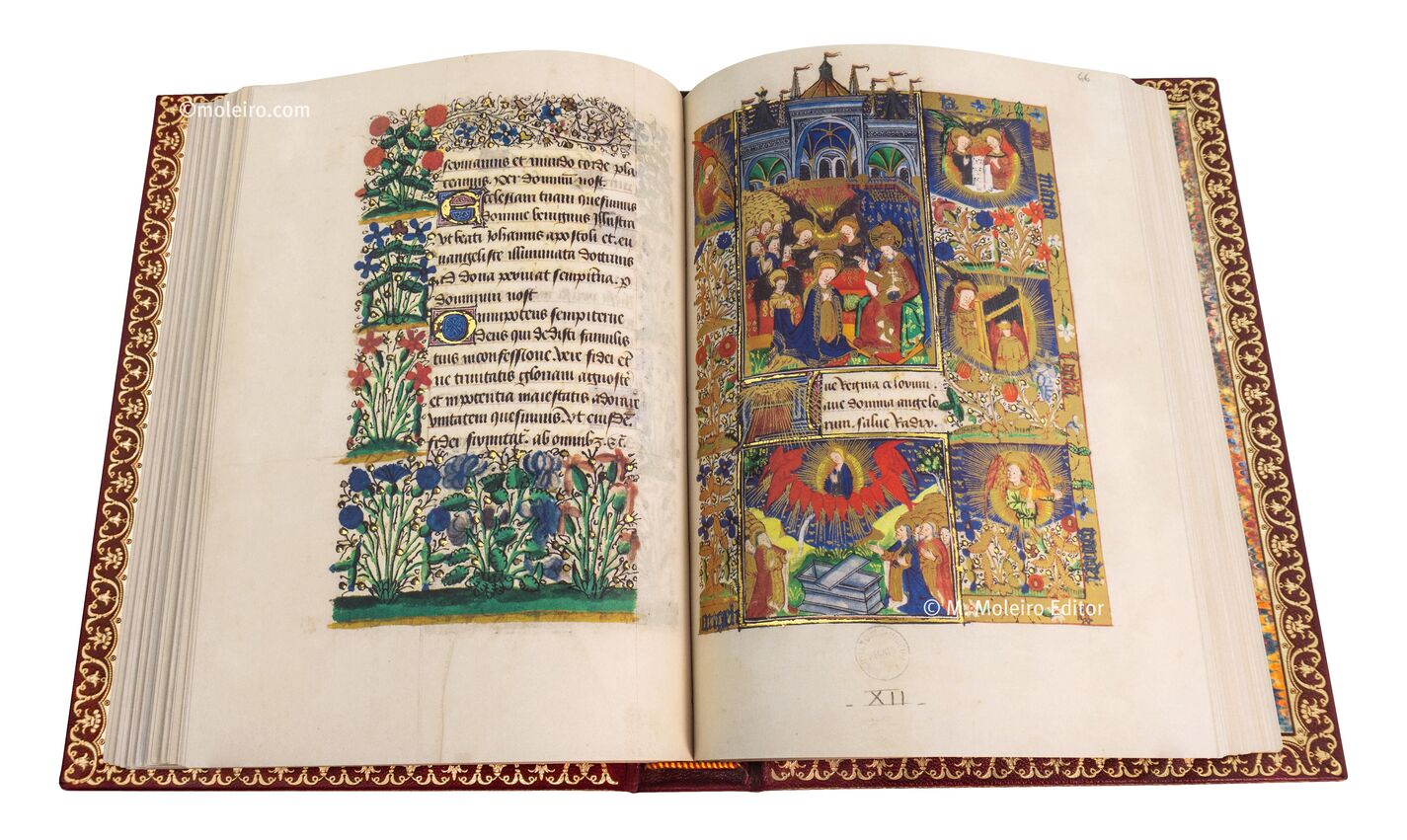
As often happens in this Book of Hours, this page is among those which needs to be read, as it were, from the bottom to the top, with the Assumption at the foot, chronologically preceding the Coronation at the top. The latter miniature really represents the outcome of the Assumption, namely the Coronation of the Virgin in heaven as she arrives and kneels with clasped hands before the crowned God. God holds the globe of the world and sits upon an imposing throne in the presence of the heavenly court. An angel behind Mary supports the train of her cloak. Two angels united by a heavenly dove (whose colour is dull because of the oxidisation of its silver ink) hold the crown which they are about to place upon the head of the Virgin. Other angels in the margins show celestial joy, with that on the top left playing the harp while the two on the right, also sheltered by a dove with outspread wings, sing a duet while reading their musical score. Below them a pair of angels play the organ, and at the foot another plays the fiddle-vielle. Altogether they make up a real orchestra, as we have already seen elsewhere (cf. supra, f. 41r).
The miniature placed below the principal image of the folio is the visualization of the Assumption properly so called, with the Virgin above in heaven, surrounded by a circle of seraphim, while below lies her empty tomb, indirect but convincing proof, if it is needed, that she definitely died and was buried. Above all, it is proof that she made only a brief passage in her tomb, in the image of Christ himself, as the Myrrophores - the bearers of myrrh - could bear witness when they brought the myrrh to his tomb on the morning of Easter. Other than him but like him, the Virgin was resuscitated in her turn and immediately taken to heaven. The text in the borders of the illustration says this in its way, Assumpta est Maria in coelum et gaudent angeli ('Mary has risen to heaven and the angels rejoice').